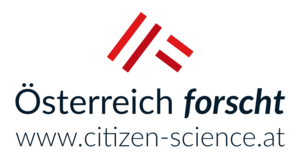Citizen Science Award 2023
Join the research from April 1 to July 31!
Plastic products and their remnants are ubiquitous. For example, we know that large amounts of plastic are in the oceans. But the amounts of plastic that end up in soils are not precisely known. Estimates say that 4 to 32 times as much plastic ends up in soils as in water bodies. In addition, we still know little about what types of plastics end up in soils and what the impacts are. This is an important area of research because we rely on soils to produce 95% of our food. Citizen Scientists are helping us fill this knowledge gap by collecting data on the presence of plastics in soils using the SoilPlastic app.
As part of the Citizen Science Award, dedicated Citizen Scientists can actively participate in the "Colorful Soil" project and collect important data. The Citizen Science Award aims to inspire all citizens* across generations for research and innovation and to enable active participation in research projects. Therefore, in addition to school classes and individuals, families can also participate in research and win. The commitment is rewarded: Participating school classes can win up to 1,000 euros, individuals and families receive great prizes.
How to participate?
With the SoilPlastic app, observations can be entered anywhere and anytime on mobile devices such as smartphones and tablets. Entries can also be made via the browser in the web-based app. An entry takes only 5 minutes and can easily be done on the side during a walk or on the way to school.

All entries in the participation period from April 1 to July 31 are automatically scored. For the Citizen Science Award, it is also necessary to fill in a short online questionnaire towards the end of the participation period. Prizes will be awarded to the three school classes / families / individuals with the most app entries and a completed questionnaire. The most dedicated Citizen Scientists will be awarded at a festive event on October 19 at the Institute of Science and Technology (ISTA) in Klosterneuburg.
Prizes
School classes can look forward to prize money for their class coffers:
| 1st place | 1,000 euros |
| 2nd place | 750 Euro |
| 3rd place | 500 Euro |
For individuals and families there are non-cash prizes provided by AGES.
What is the data used for?
The data collected will be used in the EU project MINAGRIS (Micro- and Nanoplastics in Agricultural Soils) to provide an overview of the amount and type of visible plastic on soils. MINAGRIS is also looking at the impact of plastic on soil properties and biodiversity and developing a sustainable approach to plastic. The SoilPlastic app is available in nine languages and is used across Europe to provide comparable data from different regions.
On the other hand, Citizen Scientists have the chance to be part of the European research community. You will also learn new things about plastics, soil and (citizen) science in a fun way. Furthermore, the SoilPlastic App and our events allow you to get to know other Citizen Scientists who probably have similar interests.
With the questionnaire, we want to find out what your experience was like in the project and what you took away from it. This helps us to evaluate the project activities and improve them for the next Citizen Science project. The anonymized data from the app and the questionnaires will then be published in an article. That means you become part of a publication.
Final report
Around 1000 people took part in the Bunder Boden project, which involved plastic observations using the SoilPlastic app between 01.04.2023 and 31.07.2023.
The result was over 20,000 observations, of which almost 70% came from urban areas, 14% from grassland, 2% from agricultural areas and 14% from other areas. The results from Austria will be analysed in a master thesis and further data will be collected with the SoilPlastic App in all participating MINAGRIS project countries.
We thank all participating schools, families and individuals and congratulate the winners!
Download final report
Colourful Soil - How much plastic is hidden in our soils?
Last updated: 26.08.2024
automatically translated


